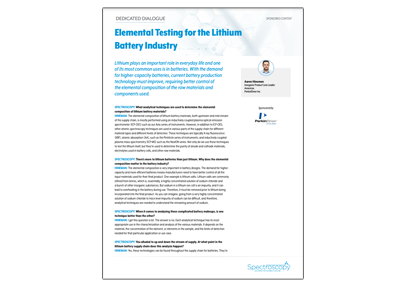Elemental Testing for the Lithium Battery Industry
Lithium (Li) plays an important role in everyday life and can be found around us in nearly every aspect of modern living. One of the most common uses of lithium is in batteries. Lithium batteries can be found in cell phones, computers, electric vehicles, and every portable electronic device. With the demand for higher-capacity batteries, current battery production technology must improve, requiring better control of the elemental composition of the raw materials and components used. Atomic spectroscopic techniques, such as atomic absorption (AA), inductively coupled plasma optical emission spectrometry (ICP-OES), and inductively coupled plasma mass spectrometry (ICP-MS) are used for a variety of analyses in the Li supply chain and battery industry. In this podcast we will explore a range of applications where these analytical techniques are used to further improve battery performance and safety.
Best of the Week: Recognizing Albert A. Michelson, Studying Star Clusters, Elemental Analysis
May 16th 2025Top articles published this week include a new Icons of Spectroscopy column, a news story about the use of Fourier transform infrared (FT-IR) spectroscopy in gemology, and a Q&A interview about elemental analysis in pharmaceutical analysis.

.png&w=3840&q=75)

.png&w=3840&q=75)



.png&w=3840&q=75)



.png&w=3840&q=75)








